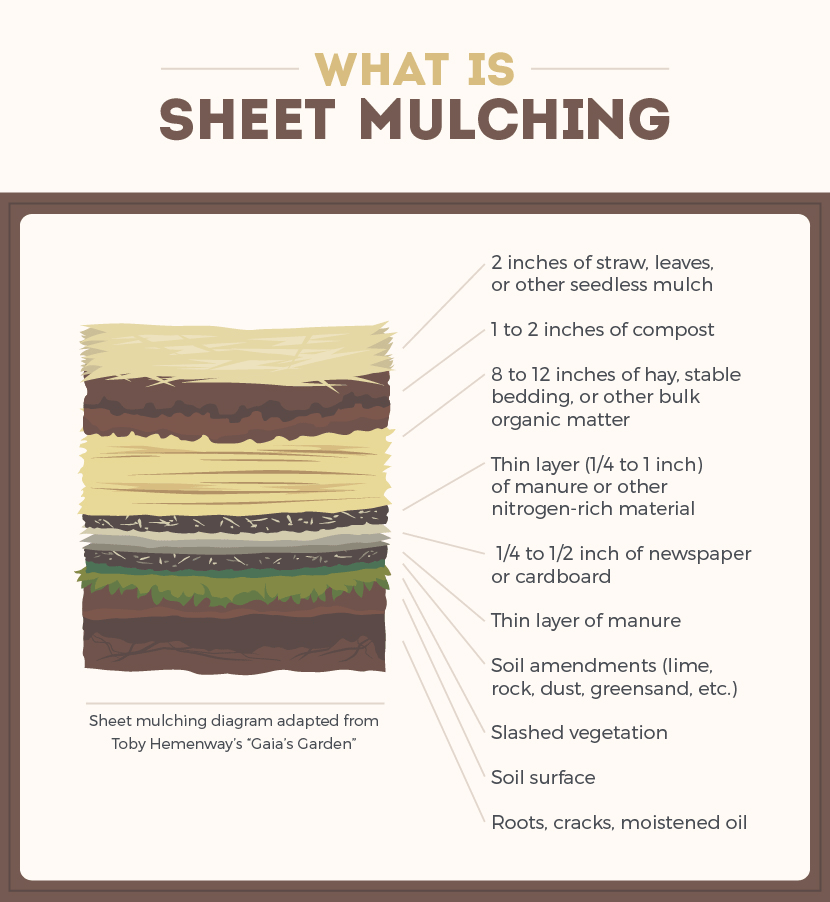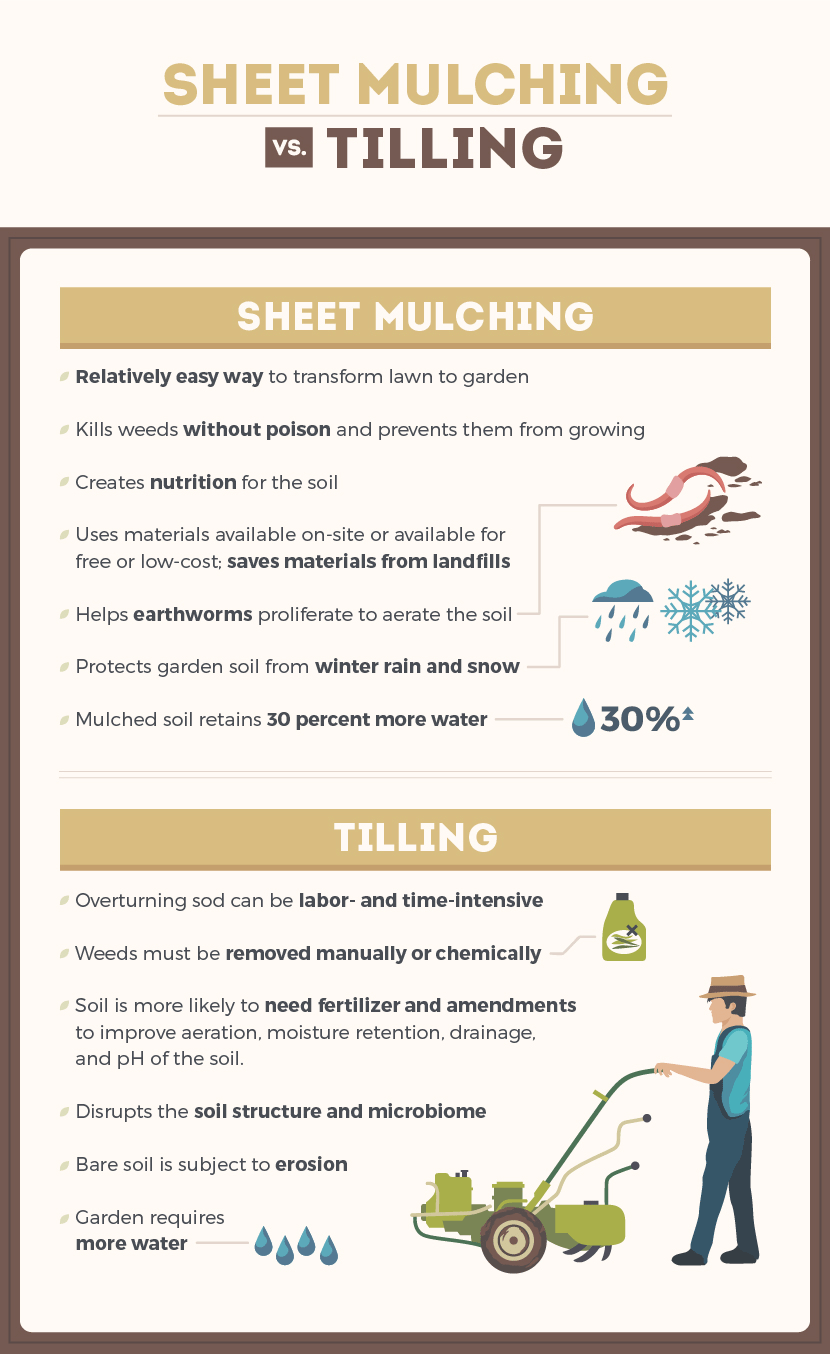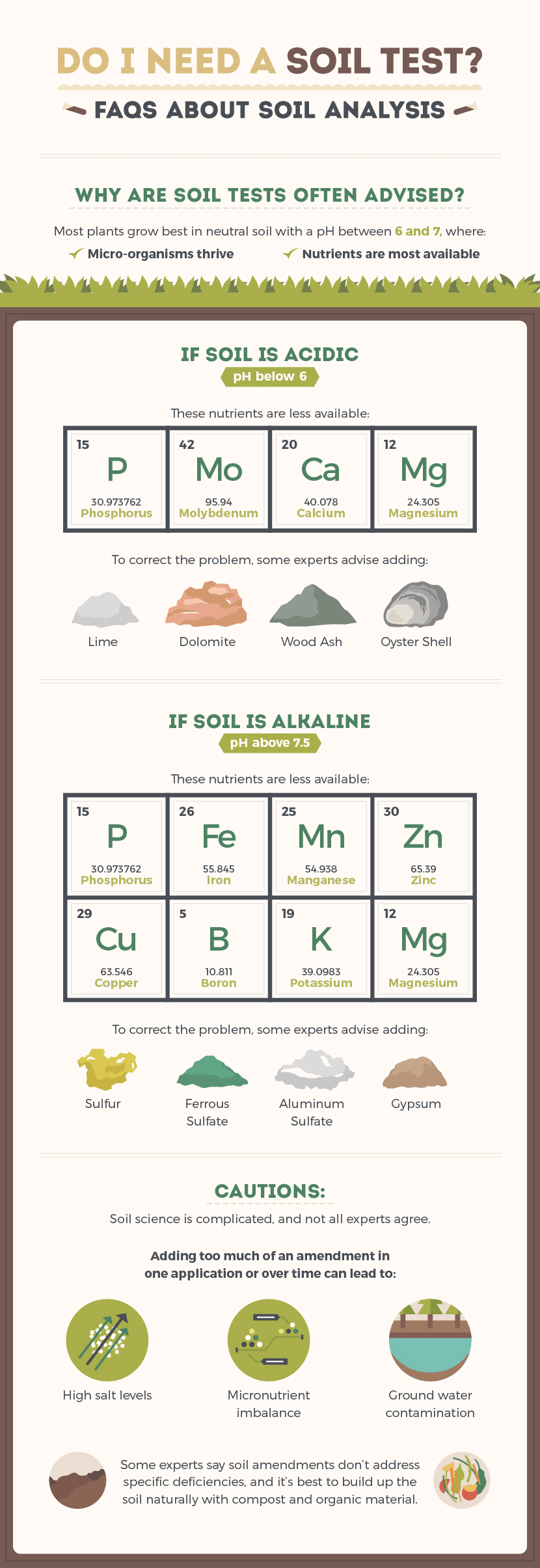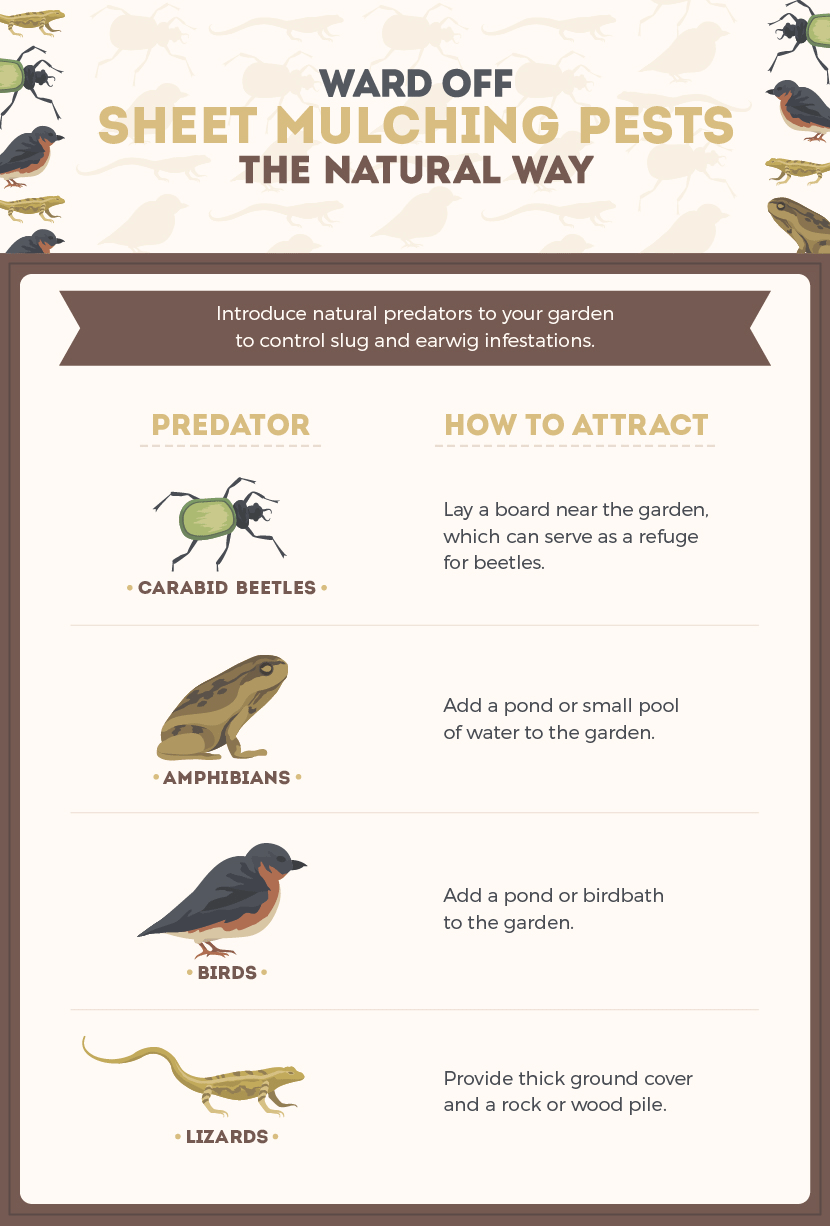Let Winter Do the Work: Build Fertile Soil with Sheet Mulching
Planning to rent a rototiller to tear out grass for garden beds next spring? Thinking about trucking in dirt to replenish lifeless soil in an existing plot?
Save time and money by sheet mulching now, and let the garden build itself this winter.

Sheet mulching is a simple, no-dig way to create garden soil. It mimics the natural way soil forms in a forest: leaves fall in autumn,
decay over the winter, and nourish plant life in the spring.
When sheet mulching, a gardener lays down various organic materials in autumn or winter, and microorganisms
turn it into a rich, complex soil structure in time for spring planting. This method offers many benefits over the more common practice of tilling.

Ready to get started? First, if planning a new bed, spend some time finding the perfect spot. Several environmental factors help support healthy, fertile soil.
Choose the Best Garden Site
Permaculture expert Toby Hemenway, author of Gaia’s Garden, recommends that gardeners start sheet
mulching in an area 200 square feet or less.http://tobyhemenway.com/resources/how-to-the-ultimate-bomb-proof-sheet-mulch/ Look for a spot that offers these four components:
- Sunlight
A garden should be in the sun most of the day. Look for an open, south-facing area that’s not shaded by buildings or trees.
- Drainage
Poorly drained soil stays wet and cold, and it doesn’t support abundant plant life. Sheet mulching helps prevent this problem, because it raises gardens off ground level and creates light,
loamy soil. To further encourage good drainage, seek out a spot that’s low on a gentle slope so the water runs away from it. Or in particularly wet climates,
consider incorporating a drainage system, such as diversion channels.http://deepgreenpermaculture.com/diy-instructions/how-to-build-a-french-drain/
- Accessibility
The French built kitchen gardens, or potagers, to be visible from kitchen windows. Take a lesson from them and look for a location that makes the garden feel like part of the house.
The shorter the distance from garden to table, the easier it is to tend and harvest.Bartley, Jennifer R. (2006). Designing the New Kitchen Garden: An American Potager Handbook. Portland: Timber Press. ISBN 978-0-88192-772-6
- Protection
The garden needs to have good air circulation, but it should be sheltered from harsh winds and kept safe from wildlife, neighborhood pets, and playing kids.
Place the garden away from trees that may invade it with roots and compete with vegetables for water.http://forums2.gardenweb.com/discussions/1599982/tree-roots-in-vegetable-garden
Gather Materials
Once you’ve found the perfect location, it’s time to collect mulching ingredients. The following recipe is adapted from
Hemenway’s popular “Bomb-Proof Sheet Mulch.”http://tobyhemenway.com/resources/how-to-the-ultimate-bomb-proof-sheet-mulch/
Collect the following materials for each 50 square feet of garden:
- Barrier material, such as:
- Two cubic yards (about one full-sized pickup truck full) of high-carbon mulch, which can consist of a mixture of any of the following:
- Straw
- Shredded leaves
- Finely ground bark
- Wood shavings
- Coop or stable sweepings
- Chopped-up yard waste, such as plant trimmings and dead garden plants (the remains of vegetable plants after they die off at the end of the season)
- Seaweed
- Three cubic feet of compost
- Three cubic feet of high-nitrogen material, which could be a mixture of one or more of the following:
- Manure
- Grass clippings
- Blood or cottonseed meal
- Kitchen food scraps
- Any soil amendments determined necessary by a soil pH test.

Don’t worry if you can’t find everything on the list or if you have trouble finding the specified quantities. Sheet mulching is forgiving.
At its most basic, it can consist of a layer of newspaper and a layer of mulch.http://garden.menoyot.com/?p=93
12 Steps to Ensure Healthy Soil
Once you find the desired materials, it’s time to start the layering process.
- Mow weeds or grass, leaving the clippings in place.
- Thoroughly wet the area, and let the water soak in overnight.
- If a soil test deemed an amendment necessary, spread the advised amount on the area.
- Spread half of the high-nitrogen material.
- Lay down the barrier material, which kills weeds and grass and prevents new weeds from growing. Cover the entire area with the barrier, overlapping the edges of the material.
- Water the barrier material.
- Pile one foot of mulch on top of the cardboard.
- Water the mulch until it’s damp.
- Spread the remaining high-nitrogen material.
- Spread the compost.
- Spread the remaining mulch, which should be free of weed seeds.
- Water regularly, wait several months, and plant the garden.
Prevent Pest Problems
Sheet mulching offers numerous benefits, but it can also present a potential challenge. Microorganisms aren’t the only ones who love sheet mulch.
Cardboard and mulch can be a haven for invertebrates, such as earwigs, slugs, and other seedling-eating pests. However, don’t abandon sheet mulching or reach for the chemicals just yet.
Sheet mulching mimics natural processes, and pest management can too. Think about the garden as an ecosystem.
Sheet mulching dramatically increases the life beneath the soil, but a pest infestation suggests an imbalance.
Rather than strip the garden of life to try to eliminate pests, a gardener can correct the imbalance by encouraging some of the
pests’ natural predators.http://www.permaculture.co.uk/articles/20-ways-control-slugs-permaculture-garden-or-allotment For slugs and earwigs, natural predators include those shown in the image below:

For a gardener willing to care for poultry, a carnivorous duck (such as a Khaki Campbell or Indian Runner) can solve a slug problem quickly.
A duck eats hundreds of slugs but leaves veggies alone. Overnight, slugs become a valuable resource traded for nutritious eggs.http://permaculturenews.org/2013/02/05/a-complete-guide-to-using-slugs-as-a-resource-with-indian-runner-ducks/
Building a healthy ecosystem can take time. In the meantime, a combination of these practices helps protect sheet mulch from pests:
- Wood chips attract termites. If the garden is near the house, do not include wood in your sheet mulch.
- Avoid laying down large wood chips, which can provide cover for slugs. If using wood shavings, use cedar, which may deter slugs and insects.
- Use seaweed in the mulch. Slugs and saltiness don’t mix.
- Lay a border of copper wire or sawdust around the garden area to keep slugs and snails from entering.
- Build a trap with a board slightly propped off the ground. Slugs and earwigs will seek refuge there,
and they can then be manually removed.http://bit.ly/1kVDxTe
It’s entirely possible to sheet mulch without having a pest problem. Just be proactive, keep a close eye on the mulch pile, and address problems that arise with minimally invasive methods first.
Conclusion
Don’t wait until spring to build your garden. Get outside now, and let microorganisms
prepare the soil for you. Sheet mulching can save time, labor, and money, and it’s an excellent first step to build a healthy garden ecosystem.
Embed the article on your site

